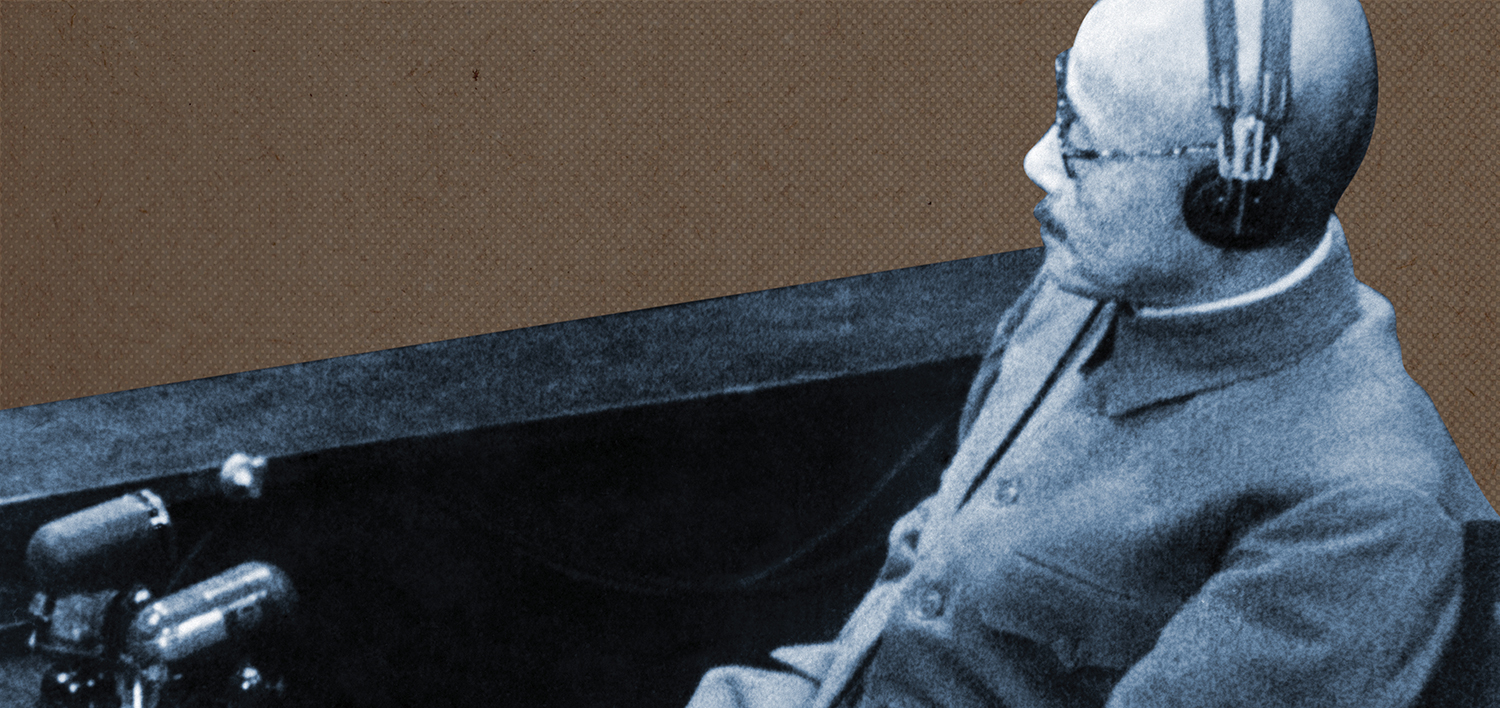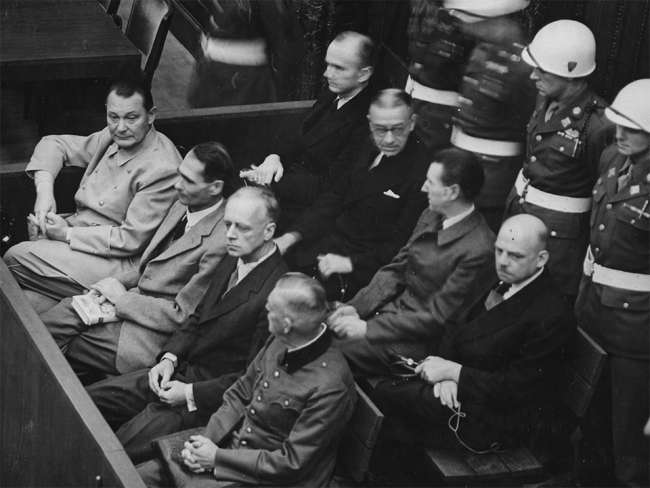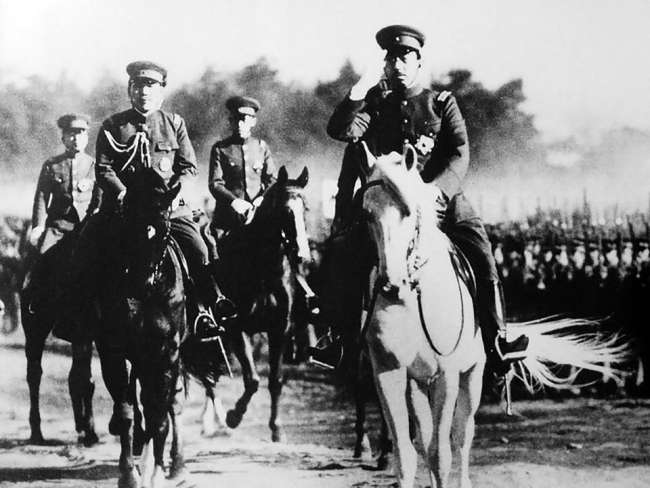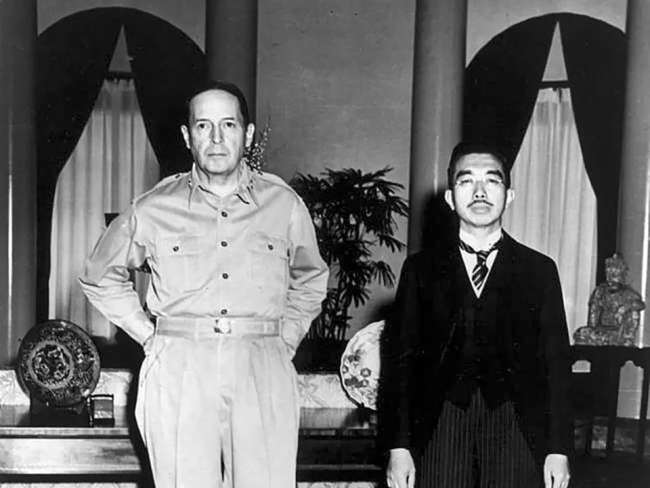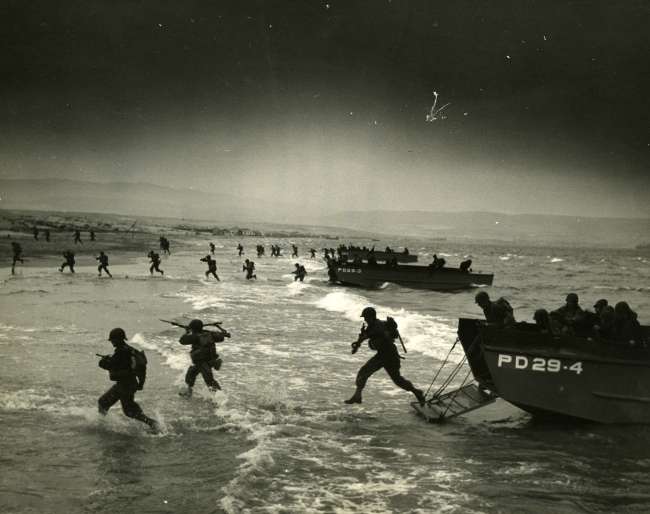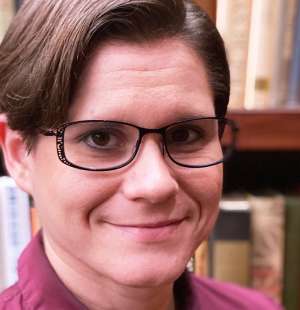Listen: Apple Podcasts, Spotify.
About the Episode
Convening on April 29, 1946, the International Military Tribunal for the Far East (IMTFE) held the war crimes trials for 28 Japanese politicians and military leaders in Tokyo, Japan. Intended to model the war crimes trials held at Nuremberg, the Tokyo Trial quickly encountered discord, as many - including several of the eleven judges selected to oversee the proceedings - pointed out a glaring absence among the accused: Emperor Hirohito. With General Douglas MacArthur serving as the Supreme Commander over US forces occupying Japan, he and Truman were in agreement that the Japanese Emperor would avoid charges for war crimes in an effort to prevent an uprising among the Japanese people, citing “no specific and tangible evidence.” This absence, however, stained the Tokyo Trial from the start, and the primary focus of the trials instead fell on the former Japanese Prime Minister and General of the Imperial Japanese Army, Hideki Tojo.
This week’s episode, written and hosted by the Museum’s Dr. Kristen Burton, explores the formation of the IMTFE and the critical role MacArthur played in the war crimes trials held in the Pacific. His influence, coupled with the decision to preserve Hirohito as Emperor, resulted in open criticism of the proceedings, including from two dissenting judges. Still, justice was necessary in response to the widespread atrocities committed by Japanese forces throughout World War II. Instead of the Emperor, Tojo came to bear the brunt of responsibility, and he - along with 28 others - faced 55 separate counts of war crimes committed in the Emperor’s name. While less may be known about the Tokyo Trial compared to its European counterpart, the insistence on metting out justice through the courtroom sought to hold accountable those responsible for horrific acts of violence and torture that occurred across the Pacific theater.
New episodes are released every other Friday. Catch up on all episodes of “To the Best of My Ability” and be sure to leave us a review on your favorite podcast platform.
Topics Covered in this Episode
- Tokyo Trial
- War crimes
- Emperor Hirohito
- General Douglas MacArthur
- Hideki Tojo
- Pacific Theater
- Censorship
- US Occupation of Japan
Featured Historian
Richard B. Frank is an internationally renowned expert on the Pacific war. After graduating from the University of Missouri, he was commissioned in the US Army, in which he served for nearly four years, including a tour of duty in the Republic of Vietnam as an aero rifle platoon leader with the 101st Airborne Division. Frank completed studies at Georgetown University Law Center in Washington, DC. Soon afterwards he began research on his first book, Guadalcanal: The Definitive Account of the Landmark Battle, which was published in 1990 and won the US Marine Corps’ General Wallace M. Greene Award.
Learn More about Richard Frank’s Latest Book, Tower of Skulls
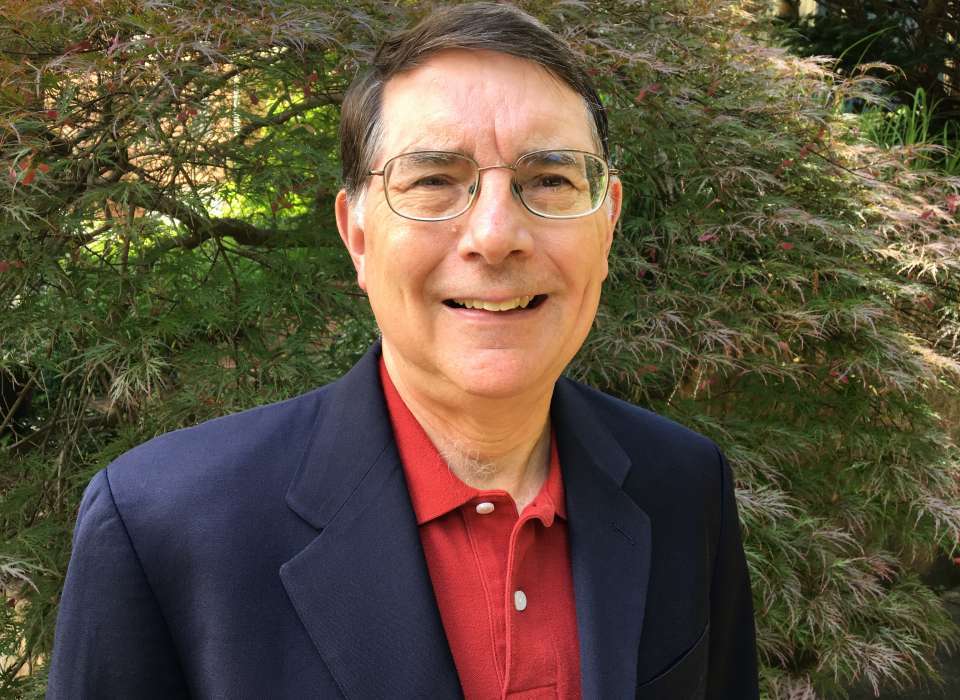
Related Content
-
Article Type
War Crimes on Trial: The Nuremberg and Tokyo Trials
Following victory, the Allies turned to the legal system to hold Axis leaders accountable. In an unprecedented series of trials, a new meaning of justice emerged in response to war crimes and crimes against humanity committed by both the Germans and the Japanese throughout the war.
-
Article Type
The Fate of Emperor Hirohito
Would Japanese Emperor Hirohito remain in power after his nation’s surrender? His fate rested in part on the attitude of General Douglas MacArthur.
-
Article Type
The End of World War II in Japan and the Question of Democracy
The construction of a democratic order in Japan during the American occupation was one of the more significant outcomes of the conflict.
-
Arizona State University Partnership
The National WWII Museum and Arizona State University's School of Historical, Philosophical, and Religious Studies of... -
Contributor
Kristen D. Burton, PhD
Kristen D. Burton is the Teacher Programs and Curriculum Specialist at The National WWII Museum in New Orleans, LA.
Sponsors
"To the Best of My Ability" is part of an ongoing series commemorating the 75th Anniversary of the End of World War II made possible by The Nierenberg Family.
Transcript
Archival Audio - Japanese War Criminals Go to Prison
[British reporter speaking]
With the liberation of the Far East, more and more Japanese war criminals are being swept into the Allied net. These scenes in Bangkok, capital of Thailand, show a typical identity parade of camp guards notorious for their cruelty. Identifying their former torturers are freed Allied prisoners of war who pick out faces so brutally familiar to them all.
[Dramatic orchestral score]
Behind the prison bars, they won’t have long to wait before paying the full penalty for their crimes.
Dr. Kristen Burton
In the Potsdam Declaration issued in July 1945, the Allied leaders promised to enforce “stern justice” against all war criminals. In Europe, the International Military Tribunal brought forth this justice in a series of trials held at Nuremberg. War crimes committed in the Pacific were taken up by the International Military Tribunal for the Far East (IMTFE), formed through a charter issued on January 19, 1946. Although the Tribunal intended to follow the model established at Nuremberg, they encountered dissension over the nature of the proceedings, particularly regarding the matter of who would face charges and be subject to a trial.
The Tokyo Trial would become the central focus of a series of war crimes trials that charged and sentenced thousands of suspected war criminals across the Pacific. At Tokyo, 28 Japanese politicians and military leaders faced 55 separate counts of war crimes, including crimes and atrocities committed against Prisoners of War.
However, the effort to bring justice to the Japanese leaders responsible for such crimes was stained from the start. The US occupation of Japan came to inform the actions taken by President Truman and General Douglas MacArthur, the Supreme Commander of the Allied Powers and leader of the US forces occupying Japan. As a result, the head of the Empire of Japan, Hirohito, never stood trial for his own role in issuing orders to the Japanese military as it waged its devastating war of expansion across Asia.
Archival Audio - Truman Taking the Oath of Office
“I Harry S. Truman do solemnly swear to faithfully execute the Office of President of the United States, and will to the best of my ability, preserve, protect and defend the Constitution of the United States, so help me God.”
Dr. Kristen Burton
You’re listening to “To the Best of My Ability: The Postwar Years” from The National WWII Museum in New Orleans. This is episode 6, “No Specific and Tangible Evidence.” I’m your host, Dr. Kristen Burton. This week, a controversial trial set in Tokyo seeks to hold accountable the military and political leaders of Japan who were responsible for the widespread atrocities committed by the Japanese military. At the center of the controversy stood - not the Emperor - but the Japanese Prime Minister and General of the Imperial Japanese Army, Hideki Tojo.
Archival Audio - Tokyo Trial Newsreel
[Dramatic music opens; reporter speaking]
The foreign international tribunal holding court in the former war ministry in Tokyo, come the wartime leaders of Japan to be indicted as criminals. Chief among them is Hideki Tojo, facing trial in the same building where he once held power as War Minister and Premier. The twenty-seven defendants enter the prisoners’ dock.
[Triumphant orchestral plays]
The judges enter, representing nine Allied nations. The man who engineered the Mukden Incident in 1931, Shūmei Ōkawa, prays conspicuously as the reading of the formal indictment by United States Captain Van Meter begins.
Dr. Kristen Burton
Chartered in January 1946, the International Military Tribunal for the Far East first convened on April 29. While intended to follow the precedent set by the Tribunal in Nuremberg, the IMTFE quickly diverged from this model. Created not through an international agreement, but through a proclamation issued by General MacArthur, the Tribunal came to feature eleven judges appointed by MacArthur. The majority of the judges came from countries that signed Japan’s formal surrender, which included: Canada, Australia, New Zealand, China, the Philippines, India, and the Netherlands, in addition to the four leading Allied powers. Sir William Webb of Australia was selected to preside as head judge over the trial.
The formation and beginning of the Tokyo Trial featured discord and disputations over the proceedings. The judges, prosecutors, and politicians from the presiding countries disagreed over who should be put on trial and what charges they would face. In spite of this, MacArthur did not wait to initiate the process, and he ordered the arrests of 39 leading suspects.
Joining us this week is historian and author of the recently released book Tower of Skulls, Richard Frank.
Richard Frank
Most Americans who know anything about the postwar trials may have heard of Nuremberg and immediately know something about what Nazi Germany had done and the horrors of that. Today, very few Americans have any real concept of just how horrific the Asia Pacific War, and particularly the death toll. And typically, I think a conservative estimate would be like 19 million noncombatants died. Of that number, actually, only about a million or 1.2 million were Japanese, which means that for every Japanese noncombatant who died, there were like 17 or almost 18 others. They were overwhelmingly other Asians, about 12 million of them were Chinese. And to have ended this war and entered peace without some sort of accounting, particularly for the high ranking individuals who actually directed the war, initiated the war, and issued lots of orders that led to conventional war crimes trials, to hold only those who got there, someone might say their hands dirty, and not reach the higher reaches would not have been justice.
Dr. Kristen Burton
The nature of war crimes committed across the Pacific featured harrowing acts of torture and widespread murder that resulted in millions of deaths, especially among Chinese and Filipino civilians. Growing from wars that were a consequence of Japan’s aggressive military expansion, beginning with the invasion of Manchuria in 1931, the resulting deaths that followed through to the end of WWII are estimated to range anywhere from 3-14 million. Under the rule of Emperor Hirohito, the Imperial Japanese Army and Navy committed war crimes that included massacres of civilization populations, forced labor, starvation, torture, and even human experimentation. Prisoners of War, too, experienced such horrors, in spite of traditional protections promised to POWs by the Geneva Convention. Japanese guards in camps set up across occupied territories intentionally ignored international law and engaged in widespread torture of prisoners in an effort to gain military intelligence.
In the aftermath of such brutality, and widespread war crimes and crimes against humanity, it was not enough to put Japan’s imperial leaders on trial. In the years that followed the end of WWII, thousands of suspected war criminals faced charges in trials scattered across Asia.
Richard Frank
I would identify a statement issued by the United Nations in late 1942, specifically promising to hold the leaders of the Axis nations accountable as being sort of the first official statement for calls that there would be war crimes trials. There were more formalization about the whole process and the concepts of what action would take place. They took place at the Cairo Declaration, and then the Yalta and then the Potsdam conferences got some more specifics about how these would take place. With respect to what happened in Tokyo, clearly, the model that was in mind was the Nuremberg Trials in Europe, which to this day, remain far, far better known than the Tokyo War Crimes Trials. With respect to the Tokyo Trials, these were called the International Military Tribunal for the Far East. And although we talk about the Tokyo Trials, they were actually one component of a three-tiered system, what were called A, B, and C trials. A-trials were the ones that were conducted in Tokyo. They were the ones that charged 28 Japanese leaders with overall responsibility in crimes against peace. Now, there were also a tier called B and another tier called C. And these were far more conventional war crimes trials. And the distinction about these was that these trials were mainly conducted at the location where the crimes took place. There were eventually over 50 locations throughout the Asia Pacific region that had B and C war crimes trials. These were conducted by most of the Allied nations that also participate in the Tokyo Trial. Eventually, it's believed, between 5,600 and 5,700 Japanese were defendants in these various trials.
Dr. Kristen Burton
MacArthur stood at the head of US power in Japan, serving as the Supreme Commander, responsible for managing the US occupation of the island, as well as overseeing the subsequent war crimes trials. The two matters came to influence the other, as MacArthur, as well as Truman back in Washington, remained highly aware of the optics surrounding the Tokyo Trial. The central question before MacArthur remained: what to do with the Emperor? Emperor Hirohito stood at the head of the Imperial Japanese military, which committed the war crimes being put on trial in his name. Throughout WWII, the Allies depicted Hirohito as an enemy equal to Hitler and Moussolini. Neither Hitler nor Moussolini faced justice in a courtroom, however. MacArthur awaited word from Washington to determine how best to approach this tenuous matter through which Japan’s leaders would face justice without undermining the newly implemented occupation.
Richard Frank
Prior to Japan's surrender, MacArthur, and particularly his military secretary named General Bonner Fellers, had been contemplating how they were going to conduct an occupation of Japan. And they came up with what's been called “the wedge theory.” And the basic concept of that was that they would use the emperor to place a wedge between the Japanese people themselves and the militaristic leaders who’d led Japan into the war, into disaster. And they were depicted as though the military leaders would be identified as having effectively betrayed the emperor and now the emperor was going to help lead the Japanese people back into peace. So he had that overall concept from prior to the Japanese surrender.
So the order issued to MacArthur, which completely changed the picture, was that it would be an indirect occupation, that we would have to work through Japanese officials. And that was extremely important because that factored into the role the emperor would play, and in effect, it also supported a preexisting concept that MacArthur had. Now, that said, Washington also issued a specific directive to MacArthur telling him not to take any action against Emperor Hirohito without Washington's approval. And contrary to some of the argument, there absolutely was no pre-agreement not to pursue the emperor in war crimes trials or otherwise prior to the Japanese surrender.
Dr. Kristen Burton
Preserving Hirohito as Emperor presented several upsides for the US occupation of Japan, but cries for justice demanded that he face responsibility for the atrocities committed by Japanese forces. MacArthur and US politicians attempted to present Hirohito as a powerless figurehead throughout the war, but this portrayal ignored orders issued by Hirohito that led to war crimes, such as his order for Japanese forces to use poison gas over 300 times during the Battle of Wuhan in 1938. Two years prior, Hirohito also ordered the expansion of a unit dedicated to biological and chemical warfare research, known as Unit 731. Unit 731 created the poison gas used by Japanese forces, and also engaged in multiple cases of human experimentation throughout WWII.
When the war came to an end, the Australian government pushed for Hirohito to be arrested, but US diplomats convinced them to back down from the matter. From MacArthur’s standpoint of seeking to maintain a peaceful occupation, arresting the Emperor and putting him on trial simply did not seem feasible.
Richard Frank
And the other thing that they're dealing with at that point was that we initially have almost half a million allied forces, mostly American, occupying Japan initially. But the American people, in their urge to bring the boys home after the war, has demanded this recall of forces and the occupation forces are now dwindling down well below 200,000. And we simply don't have enough bayonets to enforce everything we want to if we don't have cooperation of the Japanese government. So finally, Washington asks MacArthur to indicate what should be done with the emperor. And MacArthur replies in January 1945 saying that he's conducting an investigation, and basically, it exonerates the emperor from responsibility. Well, there was no real investigation and it was clearly false to say there was no real responsibility, but it does basically tie the hands of Washington to go forward with any independent argument.
And the other thing that's still lingering at that point was they still were not entirely sure that we wouldn't possibly face an insurrection, a la Iraq, after the surrender of Japan. And the emperor's authority was very important in controlling that. So if we look back, we can see that it was a big mistake not to eventually have some accounting with the emperor, as I've argued elsewhere, that basically, even if we kept him on for a while to get through that immediate crisis, ultimately, we should have at least insisted that he abdicate and accept what's called war responsibility.
Dr. Kristen Burton
Instead of Hirohito, the blame fell on Tojo. After MacArthur issued arrest warrants for leading suspected war criminals, including Tojo, the former head of the Japanese military attempted to commit suicide before his arrest. Tojo shot himself in the chest but missed his heart. While receiving initial treatment for the wound, Tojo reportedly claimed, “The Greater East Asia War was justified and righteous. I am very sorry for the nation and all the races of the Greater Asiatic powers.”
After receiving treatment, Tojo regained enough strength to stand trial. He quickly became the centerpiece of the Tokyo Trial, as prosecutors pushed Tojo to accept full blame for the war and Japanese war crimes.
Richard Frank
The absence of Hirohito as one of the defendants in the war crimes trials undoubtedly fundamentally affected the way the trial went. For one thing, the other defendants, conspicuously former Prime Minister Tojo, basically took responsibility for everything when responsibility clearly rested an important part with the emperor. Everything that Japan did was done in the emperor's name. Now, that said, he effectively presided over everything, but he did not rule it in the way or command in the way that Hitler and Mussolini did. There's simply no reasonable evidence to hold that the emperor was the master warlord or the puppeteer behind the scenes who was directing everything.
So we have a different context in which the emperor is operating. But nonetheless, the fact that everything was ultimately done in his name and not putting him on trial and then having lesser officials take responsibility just very fundamentally affected the way that the trials went.
Dr. Kristen Burton
Hundreds of witnesses testified against Tojo and the other Japanese leaders, including Wanda Damberg, the daughter of a Dutch diplomat to the Philippines. Wanda and her family were in the Philippines when Japanese forces invaded, and they were among those captured and imprisoned at Santo Tomas internment camp. After the number of prisoners at the camp exceeded 6,000, Wanda was then moved to Los Baños. While imprisoned, camp guards forced Wanda and the other prisoners to watch public torture sessions. Diseases were rampant, and the guards intentionally starved the prisoners. Wanda bore witness to numerous atrocities and widespread death.
She became one of the few women to appear at the Tokyo Trial, and in her oral history, she recalled appearing at the trial to testify against Tojo, and the risks that brought.
Wanda Damberg Oral History
In the testimony, there were 700 witnesses. They picked one witness from each camp in all the Pacific, you know, so you had all those camps in Indonesia, Dutch East Indies, in Malaysia, Singapore, you know which was all the British. So they had all these witnesses, and I was from Los Banos, I was the Los Banos witness. And they had - they had had already about 300 men - mostly men. I was the first woman witness. I get on the stand, and there are eleven judges representing eleven countries, and the head judge was Sir William Webb from Australia, he was the head judge.
Well, a lot of - among the Japanese, there were a lot of Tojo-ites, you know, people that liked Tojo and all that. So one day, I am leaving the Meiji building where the lawyers of the war crimes were billeted, and I’m going - I was billeted with nurses and the women, you know. It had been a hotel in Tokyo. Not too far from the building, and they converted it for the Red Cross women, and the nurses, so they put me in with all those women. I was going from the - I was walking across - and you had to go over a little bridge, and they took a potshot at me. The Tojo-ites. You see, they were, they didn’t like the idea that I was testifying against their hero, I guess, you know. So, I got scared to death.
Dr. Kristen Burton
As the trial progressed, MacArthur worked with prosecutors to ensure none of the evidence presented implicated Emperor Hirohito. MacArthur believed that if the Emperor faced any blame for his role, the governmental structure would collapse, and an uprising would be inevitable. As the Supreme Commander who ordered the Tribunal and subsequent trials, MacArthur held sway over the proceedings in a manner that did not occur in the trials held at Nuremberg. In addition to protecting Hirohito from an arrest, MacArthur also called for censorship of several topics, including criticism of the occupation forces, the Supreme Commander, or of the Imperial government.
Some have argued that this censorship had a distorting effect on what the general population in Japan understood about the war or the war crimes committed. However, the effect of these restrictions remains a point of debate.
Richard Frank
Well, there undoubtedly was censorship, and certainly, during the occupation, there was censorship. MacArthur was adamant about certain topics not coming up, conspicuously, controversy over the atomic bombing of Hiroshima and Nagasaki. I think, however, it's a mistake to believe that the censorship was so severe that the Japanese public did not get this full and shocking impression about what had been done in their name. I think that very clearly took place. So the censorship did not basically preclude consideration of all these acts that were done across Asia and the Pacific by Japan's forces and all this tremendous slaughter that took place, particularly in China. So the censorship did affect things, but as I indicated, the notion that the censorship precluded the Japanese people from understanding what had happened, which was a very important part of what the trials did, that did not really take place. They got the message and it still resonates to this very day.
Dr. Kristen Burton
Conflict surrounding the trials led to dissension among the judges. Henri Bernard of France, objected to Hirohito’s absence, saying the entire trial was defective from the start. As Bernard summed up succinctly in his dissent, “A verdict reached by a tribunal after a defective procedure cannot be a valid one.” Radhabinod Pal of India also dissented and argued that all of the defendants should be found not guilty, as he saw the trial as a continuation of Western powers unjustly enforcing their power over Asian peoples. In his dissent, Pal recognized the Tribunal as merely “an instrument of political power.”
These dissenting voices failed to sway the other judges. Of the 28 military and political leaders put on trial, 25 were found guilty. The remaining three included two men who died while the trial was in progress. The final man, Shumei Okawa - who gained attention for slapping the back of Tojo’s head in the middle of the court proceedings - was found mentally incomptent to stand trial. Okawa was committed to Matsuzawa Hospital for the Insane.
For those found guilty, 18 were imprisoned. A different sentence awaited the remaining seven, including Tojo.
Archival Audio - Newsreel, Japan’s Warlord Brought to Justice
[Reporter speaking]
The trial continued and, here in December 1947, Tojo was on the stand. His defense was already running into millions of words. Japan’s war criminals learned at least that justice, as interpreted by freedom’s code, called for a chance for even the arch-criminal to be heard. Finally, this was the hour in November ‘48, when Japan’s criminal, militaristic clique - the wartime Premiere and his partner in crime - were to face sentencing.
[Dramatic, suspenseful music.]
It had now become the longest trial on record. Tojo waited out the inevitable. The eleven-nation court sentenced each of the top wartime leaders separately. Twenty-fourth on the list was Tojo. Guilty of conspiracy, waging aggressive war and atrocities against allied nations, the sentence: death by hanging.
Richard Frank
For the US, the conspicuous locations for these included, in particular, Manila as well as other locations. Now, eventually, the US would try at all levels about 1,409 defendants. Of these 1,229 were convicted and there were 126 death sentences, which were carried out. Although the primary emphasis in terms of the individual cases primarily addressed US military personnel, particularly the abuse of prisoners of war, there also was, in particular, the trial over the horrendous massacre of Filipinos in Manila. And the numbers of Filipinos who died in that were numbered in the tens of thousands. So if you look at the American war crimes trials in terms of not merely prosecuting the Japanese for crimes against Americans, we also included a very large swath of Filipino allies who had been massacred by the Japanese. It was not just white people who suffered, who were being the cause for the trials. The British were also quite well marked out by the fact that in their trials they spent a lot of time on Japanese war crimes against local Asians, particularly Chinese in Malaysia and Singapore. The Australians also gave considerable attention to that.
Dr. Kristen Burton
Although intended to follow the model created by the proceedings at Nuremberg, the Tokyo Trials do not share in its legacy. Dissension from the judges, MacArthur’s influence, and the glaring absence of the Emperor himself forever marked the way the trials were conducted, and also how they have been remembered. Following their execution, over 1,000 war criminals, including Hideki Tojo, were secretly put within the Yasukuni Shrine, a controversial site that Japanese officials continue to visit to this day.
Hirohito remained the Emperor of Japan until his death in 1989. Following the trials, Hirohito’s role remained diminished to that of a limited constitutional monarch. The role of the Emperor was defined in Japan’s 1947 Constitution as “the symbol of the state and the unity of the people.”
The war crimes trials of the Far East do not always appear in the stories of WWII, and awareness of the war crimes committed across the Pacific does not match that of the Holocaust in Europe. Still, the trials, flawed though they were, sought to bring a form of justice and accountability for those who ordered and committed these widespread atrocities.
Dr. Kristen Burton
In our next episode, “A Dangerous, Costly and Heartbreaking Process,” instances of violent attacks against Sgt Isaac Woodard and other black veterans returning from the war captures the attention and condemnation of prominent voices, including Orson Welles and Langston Hughes. Growing denouncements eventually force President Truman to address cases of racial violence and injustice, leading to the desegregation of US armed forces.
From The National WWII Museum, this is “To the Best of My Ability.” This episode was written by me, Dr. Kristen Burton. Digital content manager Bert Hidalgo did the sound mixing. Archival audio is courtesy of the Screen Gems Collection at the Harry S. Truman Library, British Pathé, and Universal Newsreel.
If you like this podcast, please rate and review us on Apple Podcasts, which helps others to find the series. "To the Best of My Ability" is part of an ongoing series of programs commemorating the 75th Anniversary of the End of World War II made possible by The Nierenberg Family.
